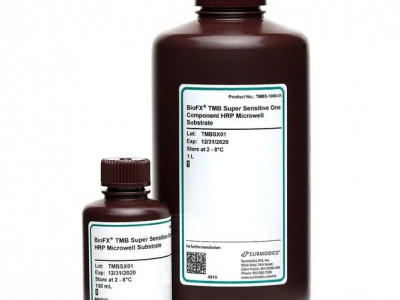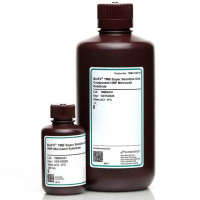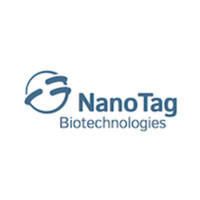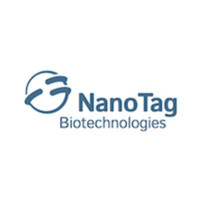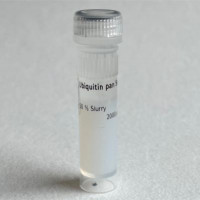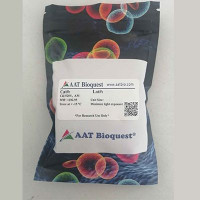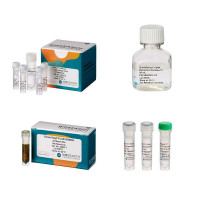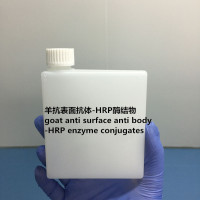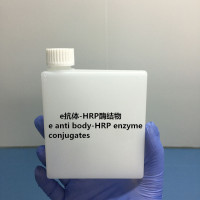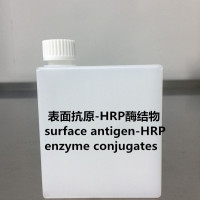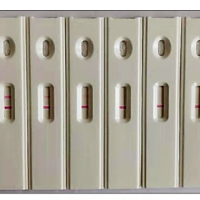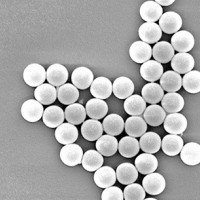TMB SUBSTRATES
Best-in-class sensitivity, stability and low background in a one-component format for TMB substrates used in manufacturing of immunoassays.
Criteria for Choosing ELISA Substrates:
During assay development it is important to consider your substrate selection carefully and to have an understanding of your assay’s requirements. Several key elements can be important such as dynamic range, kinetic rate, and assay timing.
Dynamic range is especially important when developing an assay that requires quantitation of a large range of analyte concentrations. Kinetic rate is also an important criterion when finding the right substrate for your ELISA. As such, Surmodics IVD offers several TMB substrates at varying kinetic rates to ensure we have an option suitable for each unique assay in question.
In addition, the timing of your assay is important when considering factors such as dynamic range, reproducibility and detection limit. Assay timing can be optimized by choosing a TMB substrate with the kinetic rate that allows your assay to be performed within the desired timeframe.
Key assay parameters, such as dynamic range, kinetic rate and assay timing are important factors to consider when evaluating various TMB substrates. Each TMB substrate impacts these parameters differently. Choosing the best substrate for your assay will allow the assay developer to create a robust assay with superior performance.
TMB ELISA SUBSTRATES:
TMB (tetramethylbenzidine) is a chromogenic substrate that is common in numerous staining procedures used at the Horseradish Peroxidase (HRP) detection step. One of its most common applications is in the ELISA procedure. Surmodics IVD’s TMB ELISA Substrates are all offered in ready-to-use formulations that incorporate easily into the existing assay manufacturing process. The Surmodics IVD TMB microwell substrate family outperform competitors for low background, stability and sensitivity with a variety of kinetic rate substrates. Our one-component formulations provide optimal signal generation, longer shelf lives and the ability to streamline manufacturing of assays.
Furthermore, there are several technical advantages when using Surmodics IVD’s TMB ELISA Substrates that can be see in their stability, sensitivity and their lot-to-lot consistency. When looking at sensitivity, Surmodics IVD’s TMB ELISA substrates provide up to 4 years of shelf life stability and prolonged room temperature stability.
In addition, our TMB ELISA substrates also offer assay developers increased sensitivity. Furthermore, they offer increased signal-to-noise ratios and the ability to quantitate through the desired assay range. Our TMB ELISA substrates are also offered in multiple formulations with different kinetic rates that satisfy the measure able range requirements of any assay. Along with their stability and sensitivity, our TMB ELISA substrates also help to eliminate backgrounds yielding lower error through any assay system.
SUBSTRATE FOR HRP
Horseradish Peroxidase (HRP) plays an important role in numerous ELISA procedures. TMB is made up of two separate components. One is H2O2, which is hydrogen peroxide and the substrate for HRP. The other component is tetramethylbenzidine (TMB), which generates the blue product.
When the enzymatic reaction takes place, it needs to be stopped at a set point. Usually, this process is completed by adding a strong acid. Many labs use . Then the substrate turns yellow and it can be measured underneath a spectrometer. This method is popular because it has a high turnover rate, which means that there is a fast color development. It is faster than the alternative, Alkaline Phosphatase (AP).

